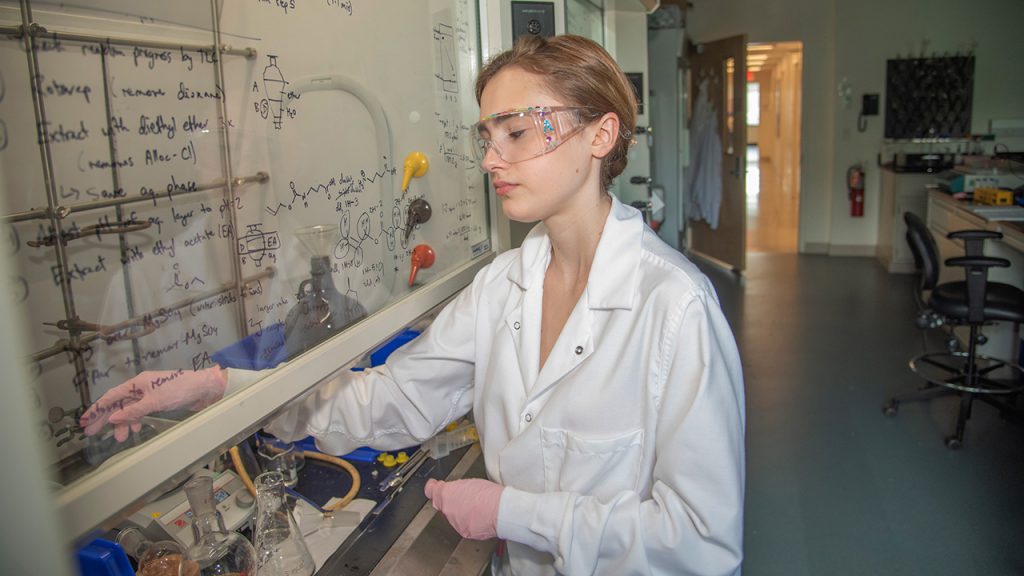The problem of antibiotic-resistant bacteria, one of the world’s great public health threats, just might be addressed by looking deep within bacteria themselves—to the initial bustle of activity that takes place whenever one of them splits in two.
That’s what three Fordham students—in two different labs—just spent their summer doing. Working with their professors, they aimed to illuminate various aspects of the replisome, the internal complex that drives the replication of bacteria’s DNA. Their findings could eventually help create innovative antibiotics that target resistant bacteria—a global problem they all cited when applying to the University for their funded summer research.
“It is a very major public health issue,” said one of the students, Sinwoo Hong, noting the “discovery void” within the field of antibiotics that has prompted broad concern.
An Evolving Public Health Threat
Nearly 5 million deaths annually are related to bacteria that have evolved to thwart existing antibiotics, a problem mainly driven by the antibiotics’ misuse and overuse, according to the World Health Organization. The need for new approaches has scientists looking beyond current antibiotics, many of which are designed to disrupt the formation of proteins or the cell wall in an individual bacterium.
One less-explored area? The interplay of proteins that kicks into gear when bacteria replicate their DNA, which “in general is not a major target for current antibiotics,” said Nicholas Sawyer, Ph.D., assistant professor in the chemistry and biochemistry department and research mentor for one of the students.
Hong, a senior biological sciences major on the pre-med track, learned about the problem of antibiotic resistance in one of her classes and was intrigued by the tools available in on-campus labs for examining bacteria. This summer, with a grant from Fordham College at Rose Hill’s summer research program, she worked with Elizabeth Thrall, Ph.D., assistant professor in the chemistry and biochemistry department, on a multiyear project focused on the replisome in Bacillus subtilis, or B. subtilis, a bacterium related to a number of human pathogens.
Moving the Science Forward
Using fluorescence microscopy in a lab at the Rose Hill campus, Hong studied various parts of the replisome and pinpointed the impact of amino acid mutations on bacterial DNA replication.
Another student working with Thrall on B. subtilis in the summer research program, sophomore chemistry major Katrin Klassen, took a different approach—in a project supported by a grant from the National Institutes of Health, she focused on a protein involved in a replication process that often produces DNA mutations, one way that new strains of antibiotic-resistant bacteria emerge.
Thrall and Sawyer are incorporating the work by Hong and another student, Ashley Clemente, into a paper on the synthesis of new DNA, the focus of Thrall’s lab for the past few years. “We’re kind of taking the basic science approach of just learning how this molecular machine functions, and then that may reveal some key interactions that can be specifically targeted,” said Thrall.
She noted another often-cited solution to antibiotic resistance—“we need to use antibiotics judiciously, not for routine use in agriculture or using them to treat viruses.”
In Sawyer’s lab, Clemente, a junior chemistry major whose summer research was supported by Fordham’s Clare Booth Luce program for women in the sciences, experimented with peptides that could inhibit one of the key interactions in the replisome of E. coli. She’s driven by a love for putting chemistry concepts into practice—“When you actually see it in action, it’s truly amazing,” she said.
Serving the Greater Good
Over the summer, Klassen and the other students grew as scientists—“I would not be able to do everything that I’m able to do now without this dedicated time to work on a lot of different experiments,” she said.
Hong particularly enjoyed seeing her work adding to that of past Fordham student researchers. “Seeing all those data compiled and then just looking at the results in the end, it’s very rewarding.”
Clemente drew inspiration from her research’s possible impact. “I love seeing how chemistry can actually be applied,” she said, “and how it can actually help people, and how it can be used for the greater good.”

